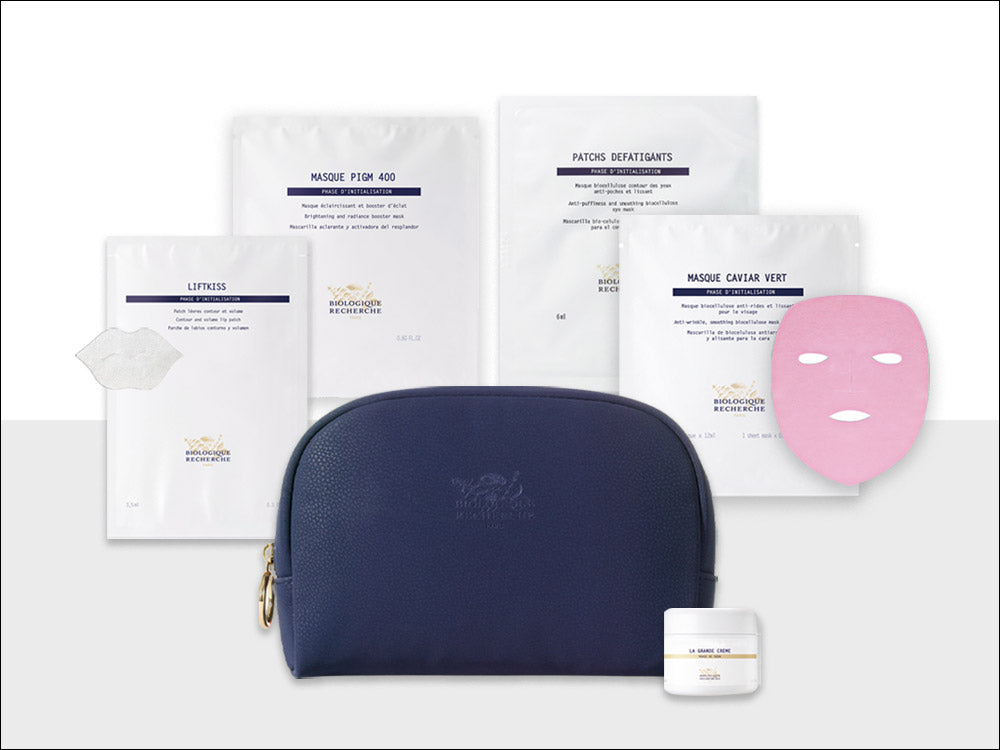Glycolic acid and salicylic acid are two popular skincare exfoliants. Each work in different ways and are suited for different skin types. Read on for more information and to determine which exfoliating acid is best suited for your skin type.
What is Glycolic Acid?Type: Alpha Hydroxy Acid (AHA), Derived from sugarcane, fruits, or milk.
How does glycolic acid work?- Glycolic acid is water-soluble and works to remove dead skin cells on the surface of the skin
- By exfoliating the outer layer of the epidermis the results are smoother skin, improved texture, and more even skin tone
- Regular use of glycolic acid based products stimulate collagen production to help reduce fine lines and wrinkles
- Dry dehydrated skin: Glycolic acid products work on the surface of the skin to help improve moisture retention preserve lipids
- Sun-damaged skin: Glycolic acid can help fade sunspots, minimize hyperpigmentation, and improve a more even skin tone
- Mature skin: Glycolic acid is an anti-aging superstar skincare product. Known to soften and smooth the appearance of fine lines and wrinkles.
- Normal to combination skin: Ideal for dull skin lacking brightness. Also suited to improve skin texture and even out skin tone.
Type: Beta Hydroxy Acid (BHA), Derived from willow bark.
- Salicylic acid is oil-soluble so it can penetrate deep inside your pores to exfoliate from within
- Salicylic acid works by breaking down the bonds between dead skin cells and unclogging pores. It is particularly effective for acne prone skin and treating active breakouts and blackheads
- Oily and acne-prone skin: Ideal for controlling excess oil production and preventing clogged pores that lead to breakouts.
- Combination skin with oily T-zone: Effective for balancing skin in areas that are more prone to oil and breakouts.
- Sensitive skin: While still an exfoliant, salicylic acid is generally gentler on sensitive skin compared to glycolic acid due to its ability to penetrate deeper without being as harsh on the surface.
- Salicylic acid can be drying, especially for those with already dry or sensitive skin. Best to use it in moderation and monitor your skin's reaction
- Overuse can cause irritation, which can lead to redness, inflammation or peeling
- If you have Dry Skin: Glycolic Acid is usually a better choice because it not only exfoliates but also helps retain moisture and protect lipids.
- If you have Oily or Acne-Prone Skin: Salicylic Acid is a better option as it penetrates the pores to decongest skin, clear out excess oil and prevent future breakouts
- If you have Sensitive Skin: Both acids can work, but salicylic acid is generally gentler. as a beginner start with a lower concentration to avoid irritation and monitor your results. Adjust as necessary
- If you have Combination Skin: Both acids can be effective, depending on your specific skin issues. Glycolic acid can help with texture and tone, while salicylic acid can target oilier areas like the t-zone and help with active breakouts
- Glycolic Acid is best suited for dry, mature, or sun-damaged skin needing surface-level exfoliation and anti-aging benefits
- Salicylic Acid is best suited for oily, acne-prone, congested or combination skin types, with clogged pores and active breakouts.
Can I use salicylic acid and glycolic acid at the same time?
You should never use these two acid products at the same time. If you are looking for benefits from each it is acceptable to use them on alternate days or in separate products to avoid over-exfoliating. Always apply a broad-spectrum sunscreen after application, as both acids increase sensitivity to sun exposure.
Keep in mind the following tips if you do choose to combine both products:
-
Start Slowly: Introduce each of them gradually into your daily skincare routine. Start by using one in the evening and the other on alternate days, giving your skin time to adjust.
-
Patch Test: Always conduct a patch test when combining potent skincare ingredients to avoid irritation or negative reactions.
-
Hydration and Sunscreen: Both salicylic acid and glycolic acid can increase your skin's sensitivity to the sun, so always apply and SPF sunscreen during the day and a intensive moisturizing face cream to ensure your skin stays hydrated.
-
Closely Monitor for Irritation: Using both acids together can lead to irritation, dryness, or redness. Reduce the frequency of use if this occurs. If your skin does not return to normal after 24 hours it is best to consult a skincare professional or dermatologist.
-
Layering: When using both products, apply the salicylic acid first (since it's oil-soluble and penetrates deeper) and follow with the glycolic acid (which works on the surface). However, we recommend alternating use on different days or different times of day to minimize potential irritation.
You can safely benefit from both acids if used properly and you monitor any adverse affects..
- Morning: Cleanser (gentle, non-stripping) → Toner (optional) → Moisturizer → Sunscreen.
- Evening: Cleanser → Salicylic Acid Product (toner, serum, or exfoliant) → Moisturizer.
- Morning: Cleanser → Toner (optional) → Moisturizer → Sunscreen.
- Evening: Cleanser → Glycolic Acid Product (toner, serum, or exfoliant) → Moisturizer.
Continue alternating between the two. Start with 2-3 times a week per acid and gradually increase if your skin tolerates it.
4. Layering in One Routine (If Using Both on the Same Day)If you want to use both on the same day, follow this order:
- Cleanser: Start with a gentle, non-stripping cleanser.
- Salicylic Acid (first): Apply your salicylic acid product (like a serum or toner). This step can help with acne and unclogging pores, as salicylic acid is oil-soluble and penetrates deeper into the pores.
- Glycolic Acid (second): Apply glycolic acid next. Glycolic acid exfoliates the surface of your skin and improves texture, tone, and brightness.
- Moisturizer: Always finish with a hydrating moisturizer to lock in moisture and maintain your skin barrier.
- Sunscreen (morning): If you're using these products in the morning, be sure to apply a broad-spectrum SPF, as both acids increase your skin's sensitivity to the sun.
- Redness, stinging, or dryness could indicate over-exfoliation. If this happens, reduce the frequency of use.
- If irritation persists, consider using one acid in the morning and the other at night, or only use one acid for a while.
- Both acids can be drying, so it's important to use a hydrating and soothing moisturizer after applying the acids.
- If your skin feels particularly dry, you can use a hydrating serum with ingredients like hyaluronic acid or glycerin before applying your moisturizer.
- Very Important: Since salicylic acid and glycolic acid both make your skin more sensitive to the sun, daily sunscreen application is essential (SPF 30 or higher).
- If using them in the evening, this is less of a concern, but it’s crucial to wear sunscreen the following day.
- Monday: Salicylic acid (evening)
- Tuesday: Glycolic acid (evening)
- Wednesday: Rest day (moisturize and hydrate)
- Thursday: Salicylic acid (evening)
- Friday: Glycolic acid (evening)
- Saturday: Rest day (moisturize and hydrate)
- Sunday: Rest day (moisturize and hydrate)
This alternating schedule helps you avoid over-exfoliating and gives your skin time to adjust.
Both acids can be powerful tools for clear, smooth skin when used correctly. Start with alternating days, and as your skin builds tolerance, you can increase usage. Always follow up with sunscreen and a good moisturizer to support your skin's health and hydration.




